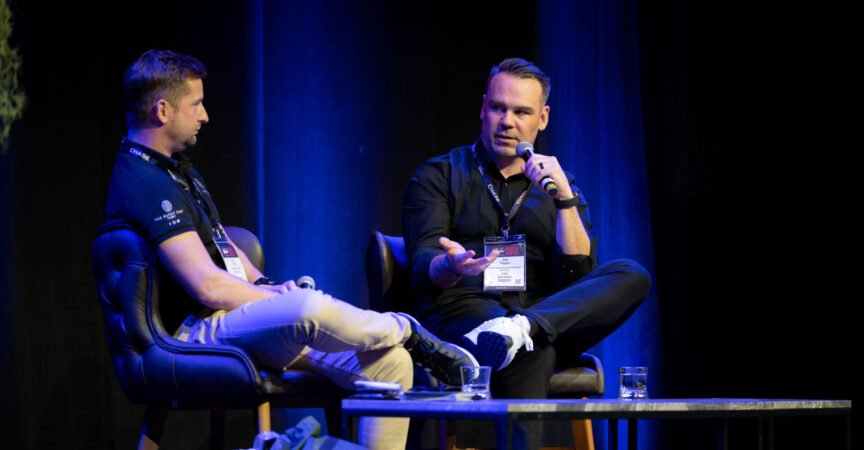Talking with Jim Taylor of Benchmark Sixty: Exploring the Relationship between Team Well-being & Business Success

When the pandemic hit in 2020, Jim Taylor realized he was exhausted. He had built a long and successful career with Cactus Club Restaurants and spent 20 years working in multiple roles across several markets, helping make Cactus Club a household name in Canada. After years of travelling and opening new establishments under the Cactus Club umbrella, it had finally taken a toll on Jim – so he left with what he calls “really no plan.”
Taylor recognized that many others in the restaurant industry were dealing with the same challenges related to stress and well-being and focused on doing what he could to improve the overall state of the restaurant industry. He created Benchmark Sixty, a boutique management advising firm for restaurants and foodservice companies. Focusing on developing strategies for restaurateurs to dramatically increase their profit margins by understanding data, implementing benchmarks, and using metrics to improve productivity, Benchmark Sixty helps foodservice establishments look at their business differently, including how to mitigate stress and support employee well-being at work. And in the current social and economic climate, implementing strategies and programs to address stress in the workplace is not just the right thing to do; it’s a business priority. According to Taylor, “We’re passionate at Benchmark Sixty about looking at the restaurant industry like other industries do in terms of how they protect their assets, take care of their employees, and impact the high turnover rates faced by the industry. It’s all really about the concept of how we protect our people in hospitality.”
The restaurant industry has always had a specific culture – work hard, play hard and is heavily steeped in ritual and tradition, not necessarily reflecting core values, systems, and behaviours that go into a positive employee experience and, by extension, the guest experience. Changing the restaurant industry’s culture is no easy feat; however, it is inevitable and driven by the new labour force,” says Taylor, “the industry is on the verge of big change, and the new labour force is going to push the change because they are unwilling to deal with the same scenarios moving forward.” Fifty-two days is the average length of employment for those new to the industry, and eight out of ten who apply for jobs have never worked in the industry before. As a result, for every ten people who start a career in the restaurant industry, eight quickly realize that something needs to be fixed, and only 20 per cent are willing to try again. “I know many feel the new generations are lazy,” says Taylor, “but I believe they just have higher expectations.”
“I know many feel the new generations are lazy, but I believe they just have higher expectations.”
Benchmark Sixty takes a very data-driven approach to understanding employee workload, at what point workload levels will cross a concerning threshold, and the immediate effects on employees, including burnout and higher stress levels, high turnover, poor customer service, and a decline in average customer spend. “Identifying workload trigger points and developing strategies to address them is a way to proactively manage the well-being of staff, which is tied directly to business success,” added Taylor.
When employee well-being is not being managed, the business suffers. “With higher workloads, typically things we see happening quite quickly is high turnover and retention,” says Taylor. “We also see higher levels of average wage because more people are working overtime, and higher levels of sick calls because being at work is not a good experience.” All of which impact the business model. The more consistent an employee’s experience is coming to work, when they know what they are getting into every day, the more likely they are to go to work.
As the restaurant business becomes more complicated, labour has grown to be the industry’s number one challenge. Taylor and his team offer strategies to restaurant owners to help manage employee workload and well-being. The first strategy Taylor always recommends to restaurants is for management to start paying attention to productivity levels within the restaurant by leveraging their software scheduling programs’ data. “Labor costs as a percentage of revenue is a widespread metric used in the restaurant industry, but when a manager increases workload through scheduling changes, they stress the rest of the team more, damaging the business.” Longer term, instead of a traditional quarterly or annual budget, Taylor recommends that restaurants set targets every four weeks. “There is so much changing so rapidly right now. Three or four months go by, and anything from interest rates to seasonality to employment levels can change dramatically.”
Another area of focus for restaurant owners to effectively manage employee stress and well-being is training. There is a development gap that exists coming out of the pandemic. “Training is something that the entire restaurant industry needs to invest in – whether it’s time or money,” says Taylor, “pre-pandemic, if someone were promoted into management, they would get six months to a year of management experience to develop those skills. Post-pandemic, the person being promoted into management has had no management experience – they’ve spent the last two years worrying about hygiene protocols, plexiglass, and takeout.” By providing compartmentalized solid leadership training, including conflict management and mental health support, restaurant owners can help their team focus on profitability, drive sales and provide outstanding customer service.
“Every pro sports league in the world has a load management strategy in place to protect their biggest asset from mental and physical injury and burnout. It’s the same thing in the restaurant industry. People are the biggest asset. We must protect them.”
If restaurant owners do not prioritize managing the well-being of their staff, the impacts could be damaging, including the cost of turnover and training and mental health challenges – all of which are incredibly expensive and could ultimately result in the business shutting down. “You can either work to prevent burnout or watch your people work elsewhere,” says Taylor. “There’s a difference between hard work, and the restaurant industry is hard work, and having to work too hard, which is happening in the industry right now as it’s trying to achieve its goals.”
While protecting employee workload may not appear to be the number one priority to restaurant owners, successful workload management can be lucrative to the success of a business by providing a more consistent employee experience, offering more predictable service, resulting in increased revenue and profitability, and lower turnover rates. Taylor uses a professional sports league analogy. “Every pro sports league in the world has a load management strategy in place to protect their biggest asset from mental and physical injury and burnout. It’s the same thing in the restaurant industry. People are the biggest asset. We must protect them.”











